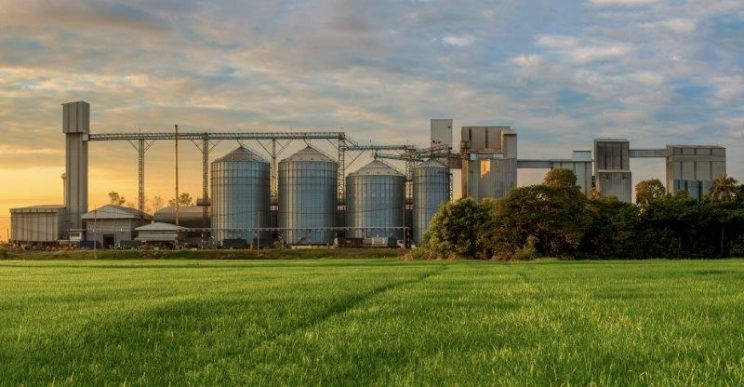ASP Fire has completed rational designs for sunflower and soya-seed processing facilities in the North West and Mpumalanga.
Leading fire detection and suppression solutions provider ASP Fire has completed rational designs for two solvent extraction plant clients operating sunflower and soya-seed processing facilities in the North West Province and Mpumalanga respectively, as well as meeting the challenge of installation in existing and functioning structures.
ASP Fire not only installs best-of-breed systems, but ensures compliance with national and international fire safety standards, as well as sign-off from insurance companies and local authorities to safeguard people and property. “In creating a bespoke system for any new or operational businesses, we look at each risk area, and ask what it is we need to do to mitigate this particular risk,” CEO Michael van Niekerk explains.
In some cases, ASP Fire will deploy sprinkler systems, while in others it will opt for foam or gas systems that deploy precisely what is needed to combat the fire most likely to occur in that particular area. In the case of these two clients, a number of different types of fires could occur, given the presence of both flammable and combustible products on-site.
Both clients extract oil from seeds by creating an initial mash, and then extracting the oil using hexane, a highly-flammable solvent that separates the oil content from the meal. From there, the hexane has to be removed from the oil by means of a drying process.
“During these processes we have heat, pressure and flammable liquid – not a combination anyone can take lightly,” van Niekerk cautions, adding that even while the heating is indirect, the vapours that arise from the mix can ignite again.
The two major risk areas are the preparation and solvent plant buildings, each around six storeys high, which makes escape for any occupants in the event of a fire a massive challenge. When the product starts to burn, it does so rapidly, which calls for fast-acting fire suppression.
“In the solvent plant where hexane is used, you have a volatile product that loves to burn, as well as flammable vapour that can explode, so this area requires extremely careful management,” van Niekerk highlights.
The last part of the process is the storage of the dried meal, where there is a significant quantity of dust. The risk with airborne dust is that it creates an explosive atmosphere that can be ignited by a single spark, implying a far greater fire risk than the hexane plant itself. There’s also crude oil storage to take into consideration, which is not flammable but combustible, so this requires a different set of solutions to mitigate fire risk and potential damage.
Having completed the rational design and installation for these clients, ASP Fire also had to meet the challenge of installation in existing, functioning structures. “This raises issues of timing and cost,” Van Niekerk stresses.
“We can’t always work safely in an operational facility, so certain areas need to be shut down for one month a year, when we can physically undertake the installation. This is usually in March or April, after the harvest and processing of around 50 t to 100 t of seed a day.”
Working with clients to determine the safest and most cost-effective timing means finding that unique window of opportunity where the plant can be easily and cost-effectively shut down for maintenance and the installation of fire-suppression systems.
Fires in solvent-extraction plants can be managed by means of ventilation, where the concentration of flammable vapours is never allowed to reach the point of combustibility. This requires forcing air into the environment to prevent build-up of flammable vapours below hexane’s lower explosive limit (LEL), as concentrations under the LEL are too lean to burn.
In an open structure, there is no vapour build-up, as this is vented to atmosphere. In an enclosed structure, however, solvent vapours are heavier than air, and can accumulate on the ground, building up to the LEL. All that is required for a potential catastrophe is an ignition source.
To reduce this risk, ASP Fire uses flammable-vapour detection systems, flame-detection systems and sprinklers, noting that entry is difficult in solvent plants, and also that these are largely automated, which means the risk to human lives is greatly reduced.
“The key risk is a hexane leak and resultant miscella, which is the volatile mix of the oil and solvent,” van Niekerk points out. To protect equipment, high-velocity foam-spray systems are installed. The steel structure itself is protected by a foam-sprinkler system. If there is a spill from a ruptured vessel that starts to burn a layer of the spillage on the floor, this can then be enveloped in foam.
All of these risk-mitigation systems from ASP Fire comply with the strict NFPA 36 standard for solvent extraction plants, which provides stringent guidelines for fire suppression and aversion. Compliance is vital for saving lives, reducing the costs of fire damage and protecting equipment and buildings from major damage.
Van Niekerk points out that one of the biggest risks in industries that use solvents such as hexane is the so-called BLEVE phenomenon, an acronym for Boiling Expanding Liquid Vapour Explosion. A hexane tanker could be up to 42 m3 in size, so an incident such as brake failure can quickly turn into a tanker fire.
“These travelling tankers usually carry dry chemical powder extinguishers, but these are ineffective in putting out tyre fires. Here the biggest concern is the vessel itself starting to heat up. The danger is that the liquid reaches the point where it’s below the level of the fire, effectively creating super-heated gas,” van Niekerk elaborates.
The vent on the tanker doesn’t allow for sufficiently fast ventilation, which means it heats up quicker than it is able to evaporate. The tanker then experiences a mechanical rupture, and a resultant expanding vapour cloud that ignites.
The ensuing fireball is calculated to be 450 times the size of the liquid, which means that a 45 m3 tanker equates to a 250 m fireball, and massive heat radiation as a result. “One of the models we created shows that the lethal radius is 360 m from the tanker. Anything closer, and fatalities result. Even further out, second- or third-degree burns may still be incurred, as well as pressure-shock injuries,” van Niekerk reveals.
To mitigate the overall fire associated with tankers and refinery structures in particular, fire-protection facilities include a high-velocity deluge system over the solvent tankers at the refuelling point. This is critical because the solvent is flammable, the fire has to be put out before a BLEVE can result. “It’s all about identifying and then mitigating the associated fire risks,” van Niekerk stresses.
Another fire risk associated with hexane plants is an Unconfined Vapour Cloud Explosion (UVCE). A hexane tank that ruptures results in a pool of alcohol that evaporates rapidly. A litre of hexane can result in a 300 m3 building explosion. Hexane forms an odourless, invisible vapour cloud, and the prevailing wind causes it to drift off the premises. This can cause a deflagration, an explosion in which the speed of burning is lower than the speed of sound in the surroundings.
This can have devastating effects. The deflagration can impinge on the pool of hexane, which can cause the vessel itself to explode, resulting in a catastrophic chain reaction. ASP Fire experts take each of these risk areas into account in terms of mitigation. “The factors are many and varied,” van Niekerk acknowledges, as these need to encompass the building, equipment, and personnel.
“We design the most comprehensive set of solutions, using the most advanced methods and equipment available. From there, insurers and local authorities certify that we’ve addressed all necessary regulations, and that all of our work complies with the strict standards governing this particular industry. Thereafter, it’s about constant vigilance and inspections, caution on the part of by all personnel, and knowing how to avoid the unimaginable,” van Niekerk concludes.








